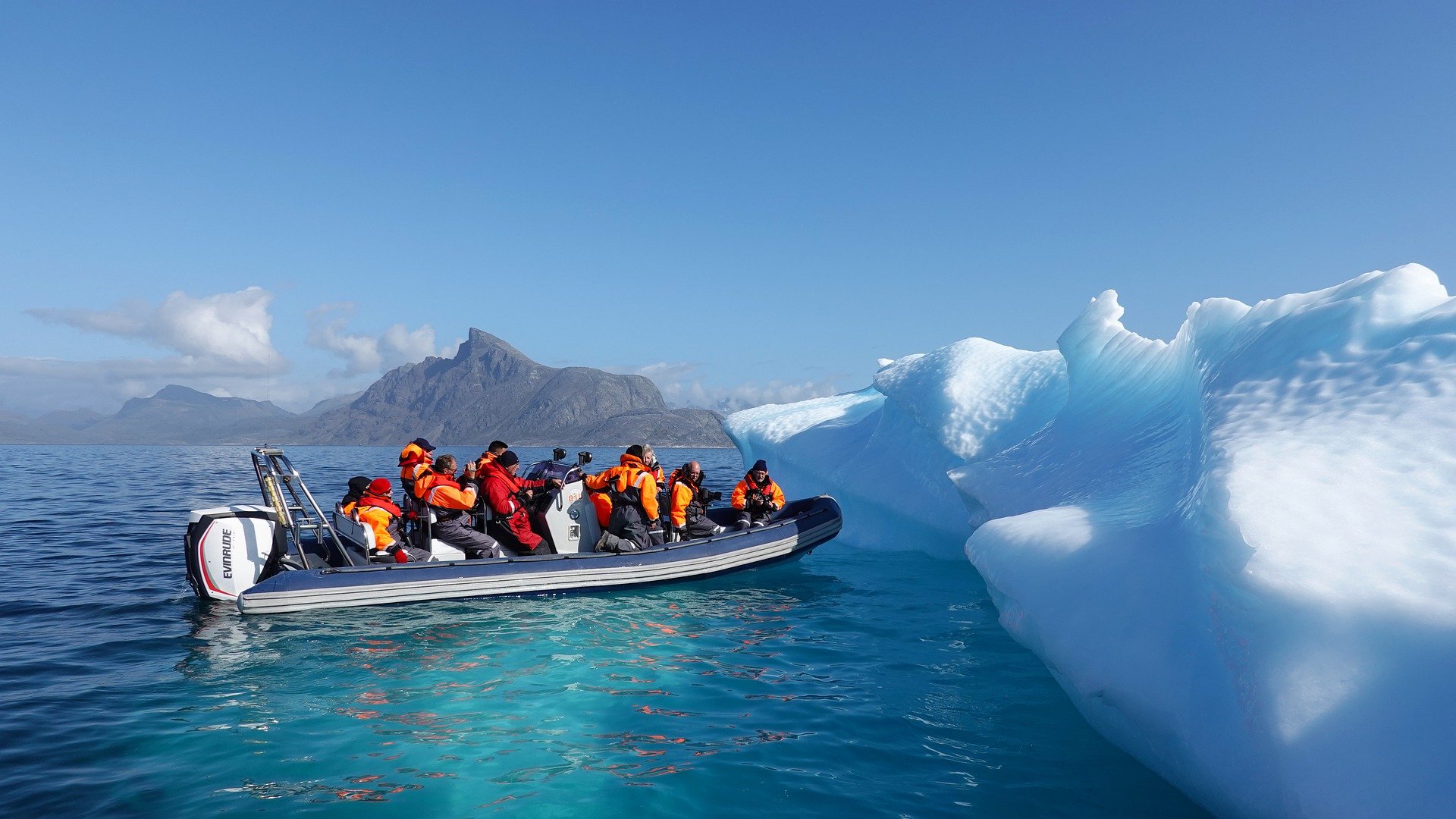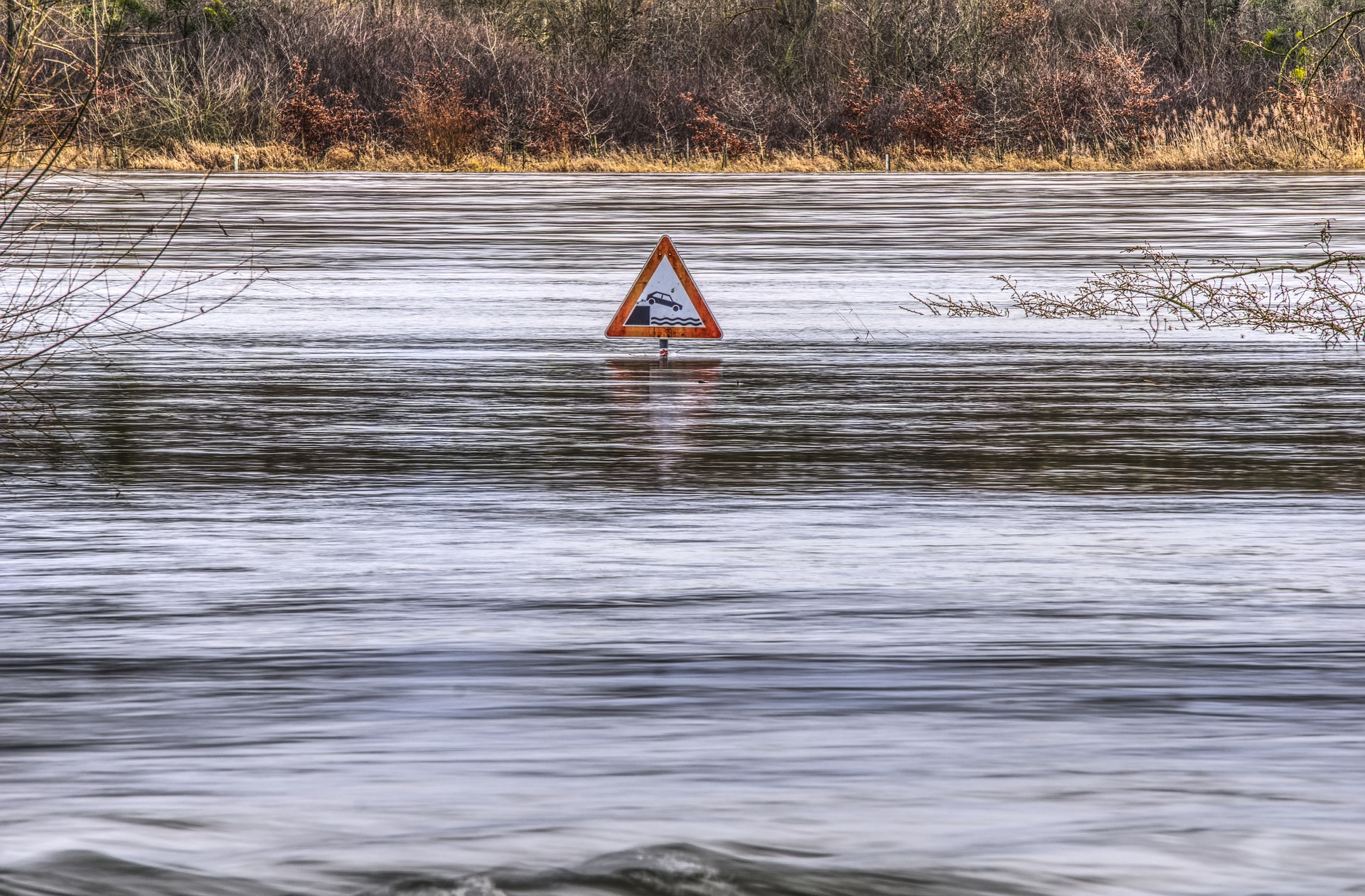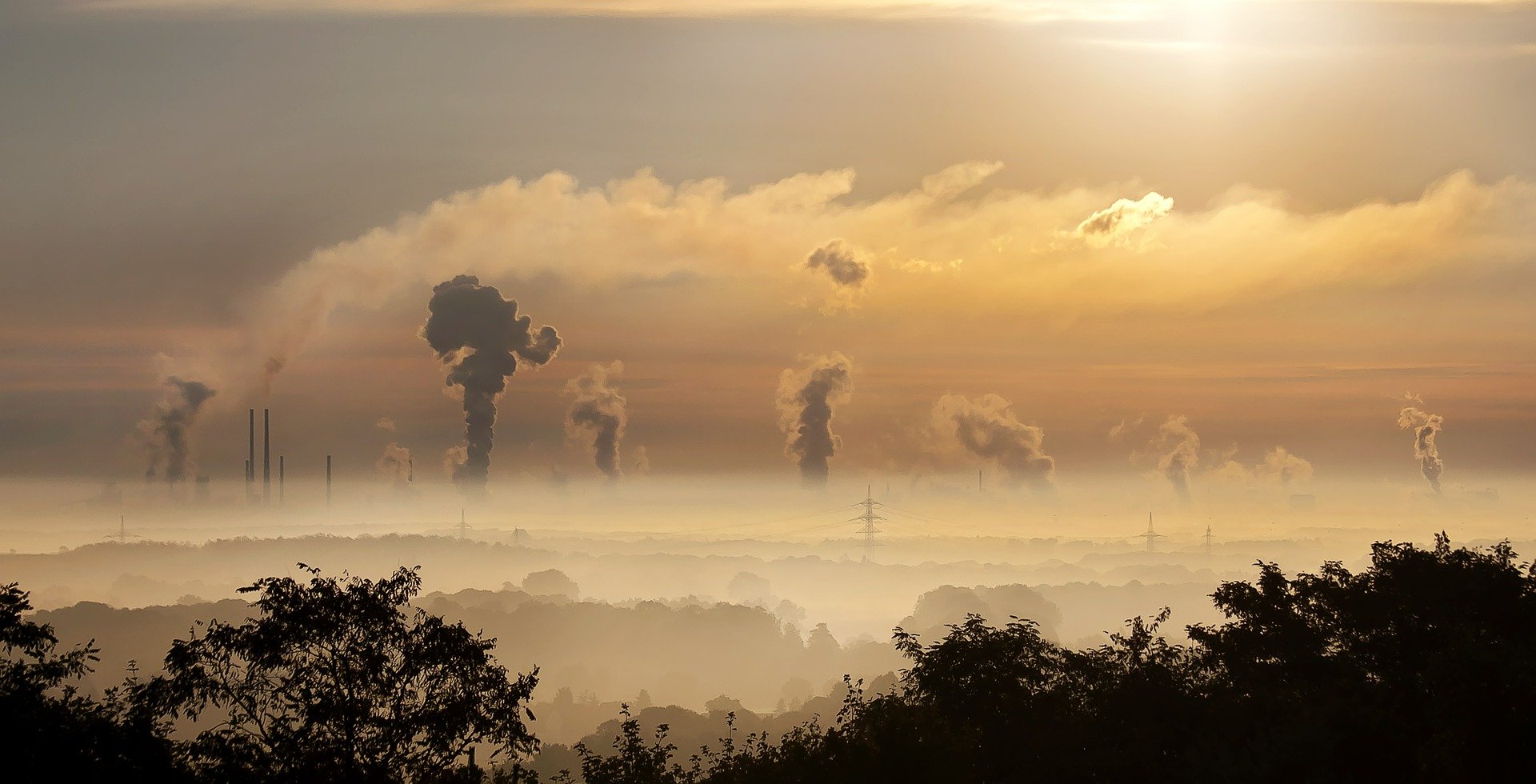by Vivienne Vent, edited in March 2022

Fig. 1: The melting of the glaciers are one of the many consequences of climate change, photo: dassel/Pixabay
The IPCC (The Intergovernmental Panel on Climate Change) published its sixth report about the latest findings about climate change and the news are full of it. Again, fundamental questions about our modern lifestyle arise, which strongly influences our environment. The IPCC-report contains most important information, but not everyone finds time to completely read through the report. In the present article we provide the most important statements of the report.
This article was edited in March 2022 by adding the essential information from the IPCC report published in February 2022. The addition can be found at the end of the article.
The report AR6, published on 7th of August 2021, is the first part of the sixth IPCC-report, which shall provide evaluation about the latest findings about the climate change between the years 2015-2023. In the following, the quintessence of the Summary for Policymakers is summarised.
What is the IPCC?
The IPCC (The Intergovernmental Panel on Climate Change) is an international commission of scientists, that summarises and evaluates the research on global climate change. It was established in 1988 by the World Meteorological Organization (WMO) and the United Nations Environment Programme (UNEP). Today, the IPCC comprises 195 members from all UN-states, including the scientists of the Alfred-Wegener-Institute.
The IPCC is divided into three working groups: Working Group I summarises the natural scientific basics about climate change, whereby Working Group II evaluates consequences, adaptations and damage in the environment caused by climate change. Working Group III works out approaches for mitigating climate change.
What information can be found in the IPCC-reports?
The reports shall provide a scientific basis for global climate policy and only contain suggestions for policymakers, that is, they do not contain actual draft laws.
The writing process is transparent and passes through several procedures of correction, which makes the IPCC-reports one of the most important scientific documents in fighting the climate change.
Annotation of the editorial team: All facts and numbers mentioned in the following were extracted from the Sixth Assessment Report of the Working Group I (AR6), published on 7th of August 2021. Possible future scenarios and hypotheses were extracted from the report as well and are not based on speculations of the editorial team of the Science Blog.
Status Quo: The Present State of Climate Change
The anthropogenic influence has already led to massive changes in atmosphere, cryosphere and biosphere as well as in the oceans. Eventually, these changes resulted in strong weather- and climate extremes.
- The average amount of unbound carbon dioxide in the atmosphere increased continuously since 2011. The numbers are appalling: In 2019 the concentration of carbon dioxide in the atmosphere was the highest since 2 million years. Additionally, highest values were measured for methane and nitrous oxide within 800,000 years.
- The global surface temperature was 1.09°C higher between 2011-2021 in comparison to 1850-1900, whereby it increased faster since the 1970s than within every other 50-year-period within the last 2000 years. In addition to that, the surface warming is reinforced by radiation exposure from outer space.
- Consequences of global warming and emission of carbon dioxide: acidification of the open oceans, warming of the upper ocean layers (down to 700 m) and loss of oxygen within the water.
- The global Mean Sea Level increased by 0.2 m between 1901-2018. 50% of the increase can be explained by the thermal expansion of water, 22% by the melting of glaciers, 20% by melting of the remaining ice sheets and 8% by changes in water stored on land.
- Warm weather extremes and high precipitation increased in frequency and intensity since the 1950s.

Fig. 2: A rise of Mean Sea Level does not only effect people living in coastal regions, photo: distelAPPArath/Pixabay
An anthropogenic influence on the aforementioned changes, i.e. increased CO2 emission by transport, has already proven several times. In their report, the scientists of the IPCC emphasise that the climate change induced by humans already affects every inhabited region of the planet.
Our Future: More Than Just a Thought Experiment
Based on the figures of the years 1850-1900 and today, the scientists of the IPCC established five future scenarios: Consequences of climate change based on very low, low, intermediate, high and very high GHG emissions (GHG = greenhouse gases, e.g. CO2, methane, nitrous oxide) (for a more detailed presentation of the scenarios please see Box SPM.1). The future drawn by the report is deflating while also showing that there is still a chance for turnaround.
- The scenarios show very clearly: No matter how much or little greenhouse gases are released into the atmosphere, the global surface temperature will increase until the middle of the present century (2041-2060). More important are the following decades: If GHG emission will be kept very low, global warming will only increase by 1-1.8°C between 2081-2100. In contrast, if the emission will be kept very high, global surface temperature will increase by 3.3-5.7°C. For comparison: A global warming by 2.5°C in relation to the temperature between 1850-1900 was last detected 3 million years ago.
- The stronger the global warming, the stronger the extremes: With every 0.5°C added to the warming, intensity and frequency of heat extremes (heat waves, extreme precipitation and extreme drought) will increase. Daily precipitation would intensify by 7% when the global surface temperature rises by 1°C(well explained in Fig. SPM.5).
- In long-term scenarios, climate change will influence the global water cycle as well, which will result in an intensification of changes in the cycle as well as monsoon-cycles and occurrence of aridity and precipitation events. Most affected are monsoon-regions (e.g. South and Southeast Asia) and those, in which weather strongly correlates with the seasons.
- The higher the CO2 emissions the less effective the carbon sinks (i.e. natural storage of carbon, e.g. in forests). This will lead to a higher CO2 concentration in the atmosphere, which cannot be processed and stored anymore. This effect is reinforced by existing cities and continuous urbanisation.
- Many climate processes will need decades to centuries to fully recover. Most affected are the oceans: The acidification, loss of oxygen and rising sea level will most likely worsen until the end of the 21st century. Snow in the mountains and glaciers will continue to melt, mostly in the region of Greenland. The scientist even assume a complete loss of the ice of Greenland.

Fig. 3: Cities facilitate our lives, but eventually lead to a worsening in air quality, photo: FotoRabe/Pixabay
Conclusions and Suggestions
On the basis of the aforementioned findings, the report contains continuative considerations and suggestions for policymakers for establishing a climate friendly future scenario:
- Next to anthropogenic influences natural events are important to consider. They can influence changes in climate induced by humans on a regional scale (e.g. enhance those changes). Such circumstances have to be included into the planning of (political) changes.
- Events, that were considered unlikely until this day, e.g. the total loss of the ice sheets, abrupt disruption of the ocean currents and regional extreme events, will be more likely with rising surface temperature and GHG emissions. This should be included in political planning as well. Additionally, a massive loss of the still remaining Antarctic ice and extensive forests cannot be excluded.
- The net CO2 emission must become near zero, which also applies for other greenhouse gases, e.g. methane. This finding supports the findings of the IPCC-report AR5. There is a clear connection between anthropogenic CO2 emissions and global warming. The net CO2 emission must be reduced to near zero to stabilise global surface temperature.
- There should be more methods developed for reducing or storing atmospheric CO2 (so-called CDRs = CO2 removals). With the help of such methods, the acidification of the oceans could be completely inverted, however, it has to be mentioned that such processes will continue to worsen over the next decades (see above).
- If the GHG emission will be kept low, the air quality will improve from 2040 on, even in regions, in which the air quality is very poor. In regions, in which air quality is still good, the quality can even improve remarkably until 2040.
You can find a complete version of the Summary for Policymakers down below. The figures are easy to understand and complement the present summary of the report visually.
Reference to Research in Bremen and Future IPCC-Reports
The Working Group II will publish their evaluation about climate change in February 2022, presumably. Member of the Working Group II are the scientists of the Alfred-Wegener-Institute. Co-president of the WG II is Prof. Dr. Hans-Otto Pörtner, who teaches seminars at the University of Bremen in the field of marine biology. The report of the WG II will summarise the global and regional consequences of climate change on ecosystems, biodiversity as well as human cultures.
The report of the Working Group III will follow in March 2022, presumably.
Key Findings of the Report “Climate Change 2022” (02/27/2022)
An additional document to the report mentioned above was published by the Working Group II on 02/27/2022. Find the most important information here:
- More than 3.3 billion people are now living in regions that are affected by climate change. One can find strong local differences.
- The threats caused by climate change have worsened since the last IPCC reports. The prognoses made by the IPCC appeared to be true in most cases, however, they became reality much earlier than expected.
- Adaptions to climate change are limited. By that, the WG II does not only mean natural adaptation to an environment, but also technical and financial adaptation of humans. The stronger the effects of climate change the harder to go against it with modern technology and money. Regions, that are poor already, are affected the most.
Substantially, the report shows that climate change is indeed very complex and does not only affect natural ecosystems, but also human systems.
It is important to understand that climate change is a dynamic process: There won´t be a point, where it will be “worst”. Even though, we may reach the goal of global warming increasing by 1,5 degree Celsius, the effects will be very high already. However, the more we fail to reach that goal, the stronger the effects become and the harder it will be to fight against it.
More information about the report can be found under “links” (see following).
Recommendations
The Podcast „The Climate Pod” summarises the report in a conversation with one of the lead authors Dr. Ed Hawkins (Episode Road To COP26: The IPCC´s New Report “Climate Change 2021: The Physical Science Basis” (w/ Dr. Ed Hawkins)) (9th of August 2021)
We also recommend the IPCC´s interactive atlas, with which one can simulate different climate scenarios and consequences.
Links
Official website of the IPCC: https://www.ipcc.ch
Sixth Assessment Report 2021 (AR6), Summary for Policymakers
All figures mentioned in the text can be found in this version
https://www.ipcc.ch/report/ar6/wg1/
Report “Climate Change 2022” from 02/27/2022, Summary for Policymakers
https://www.ipcc.ch/report/ar6/wg2/
Website of the IPCC bureau of the Alfred-Wegener-Institute








Leave a Reply